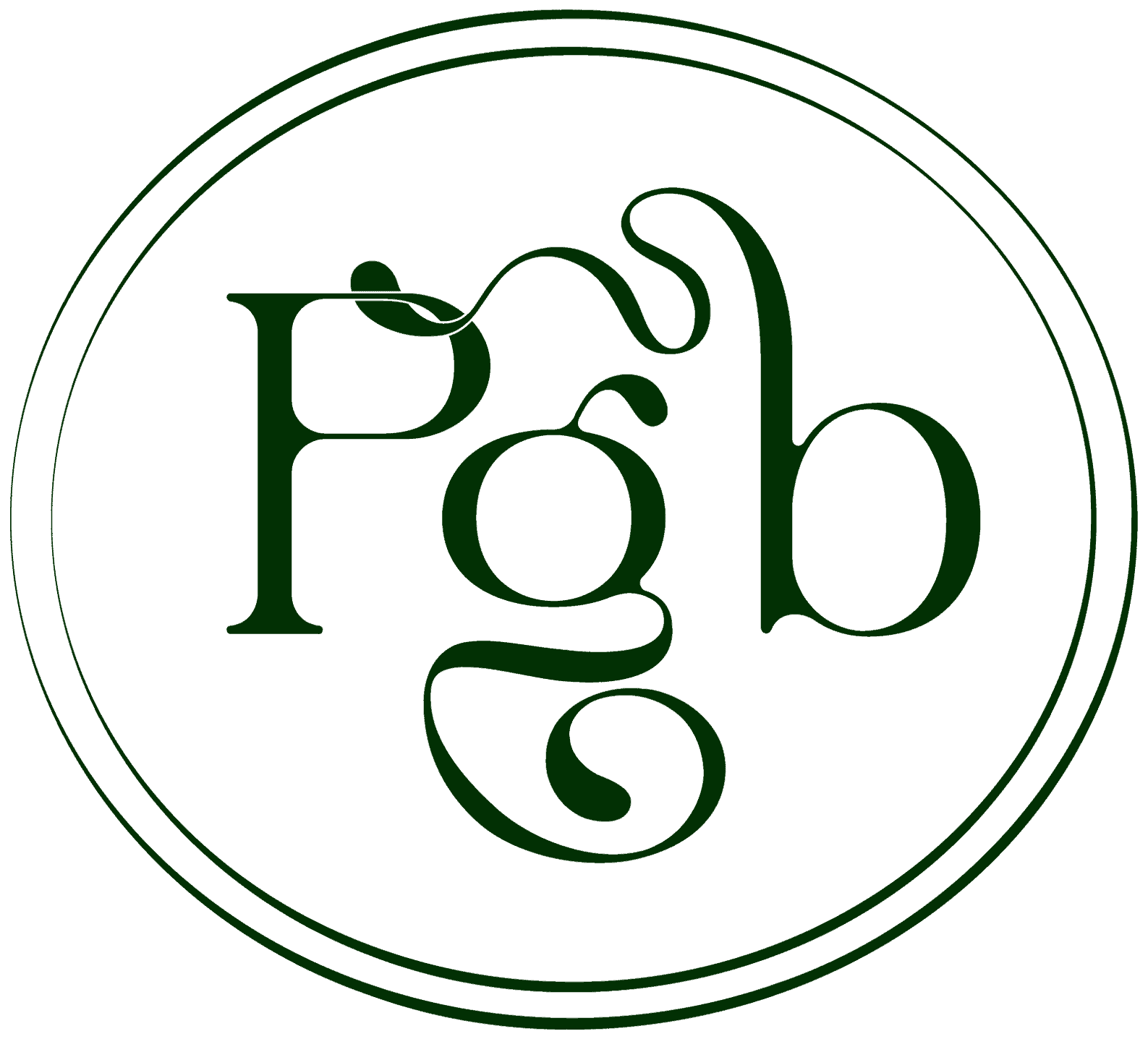My list of top underrated but exciting rare Anthurium species you may want to consider adding to your collection.
Meet Anthurium radicans x luxurians, cutucuense, pedatum, arrow, lineolatum, and balaoanum.
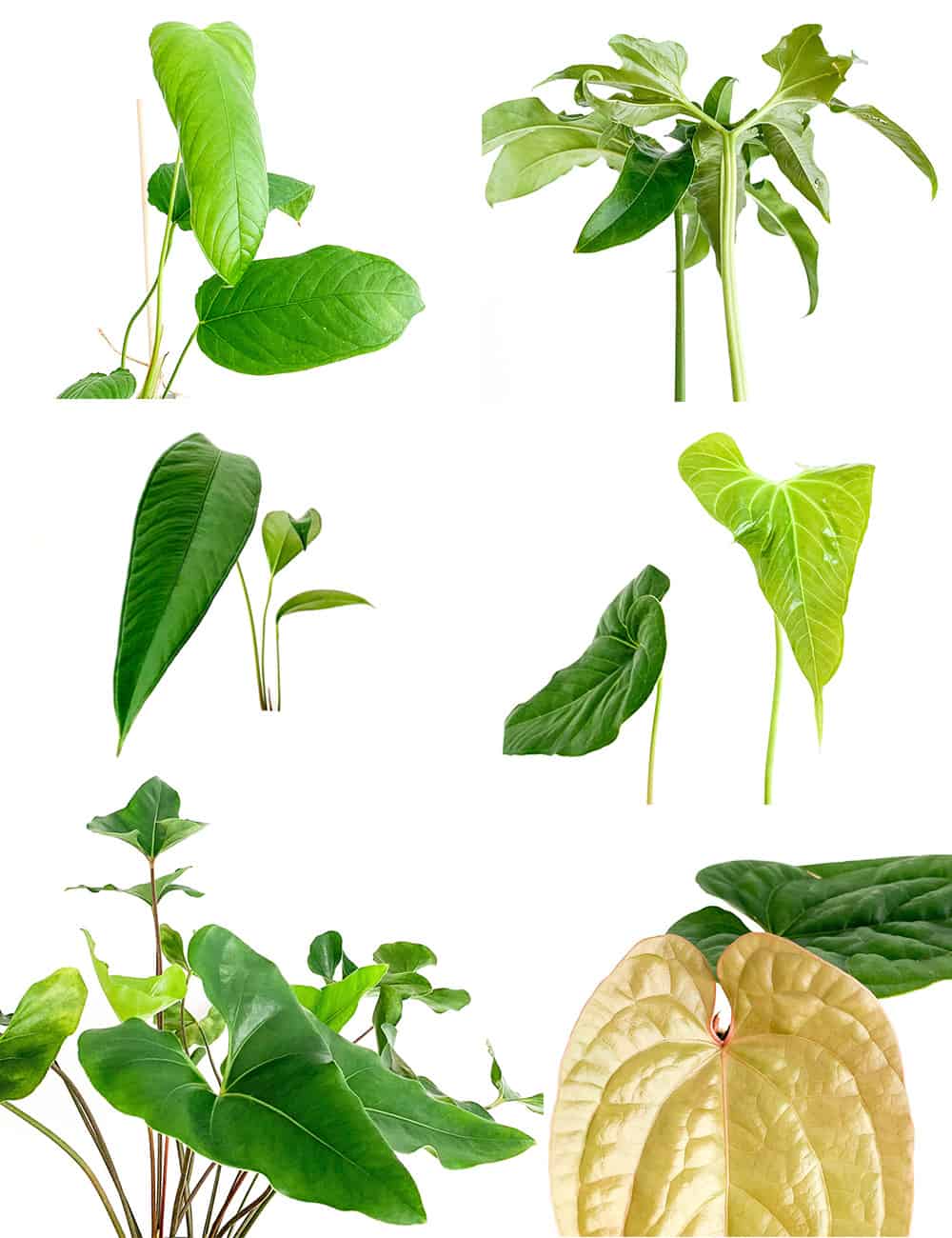
If you’re a houseplant enthusiast, then you know that the genus anthurium has some of the most beautiful plants.
You probably have seen an anthurium, the colorful flowering type (Anthurium andraeanum), at your local supermarket. Only these hardly resemble the anthurium species avid aroid collectors are after.
The genus of Anthurium counts about 1500+ species discovered and probably just as many yet to be unearthed in the wilderness of tropical forests.
If you’re not a complete novice to the indoor houseplant hobby and are into anthuriums like I am, you probably already have some dark green Anthurium magnificum, vittarifolium, or forgetii in your collection. These are the most popular Anthurium species due to their spectacular foliage and availability in retail.
Given a large number of anthurium species, you’re bound to come across while scrolling on Instagram some magnificent, rare ones that are harder to come by.
Here’s a look at six of my favorite underrated or rarer anthuriums I collected over time.
1. ANTHURIUM RADICANS X LUXURIANS
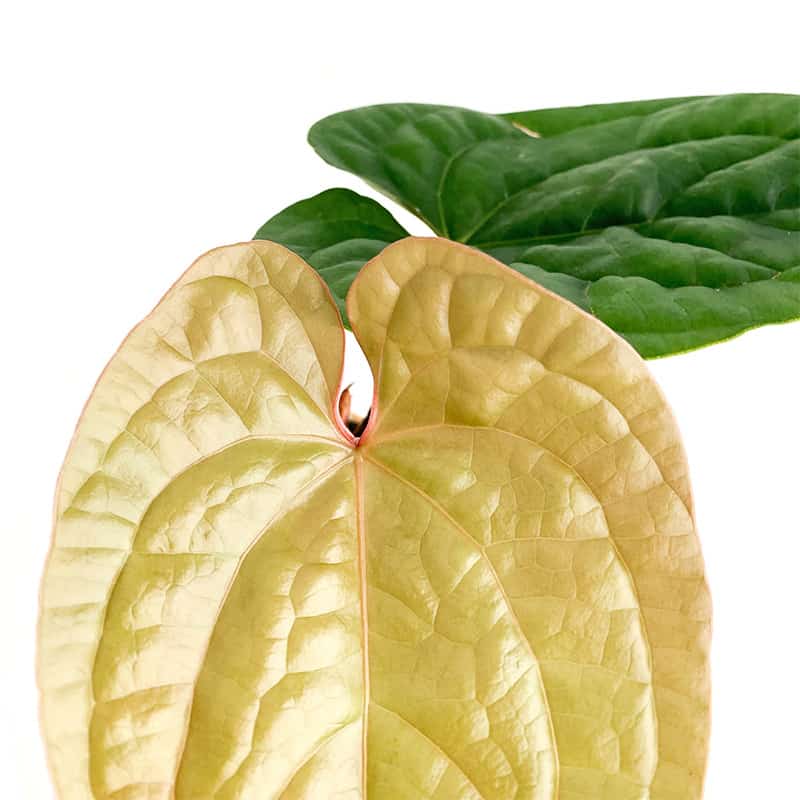
Hybrid anthuriums are often difficult to identify. This one is no exception, originally sold to me as an anthurium radicans species. But it is actually a hybrid of Anthurium radicans and Anthurium luxurians.
Their growth pattern is the easiest way to distinguish between Anthurium radicans species and Anthurium radicans x luxurians hybrids. The true anthurium radicans is a creeper, whereas an Anthurium radicans x luxurians is not.
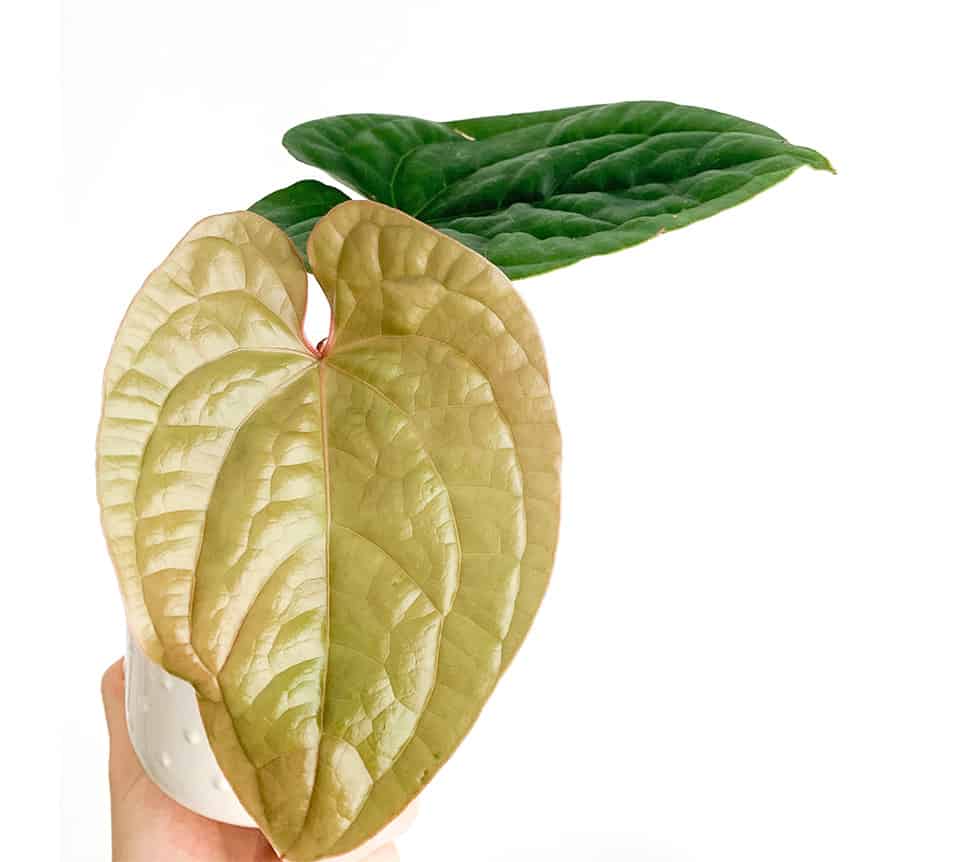
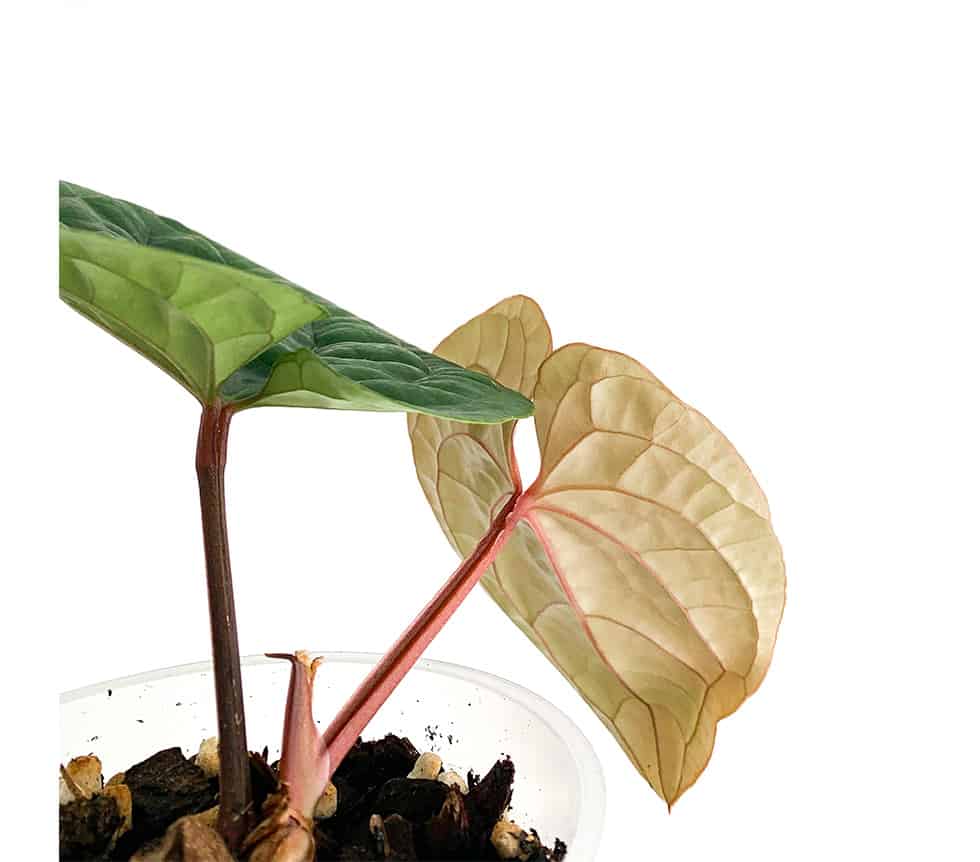
The leaves have bullate, blistered texture, and are very thick. The textured green leaves give off a prehistoric, dinosaur-like vibe. With a high total surface area, this pebble-like texture helps capture more light.
It also allows for quick drainage, preventing the water from staying on leaves for a prolonged period, which makes sense given that these terrestrial species inhabit very wet tropical forests.
New leaves emerge in copper orange before turning into dark green leaves as it matures.
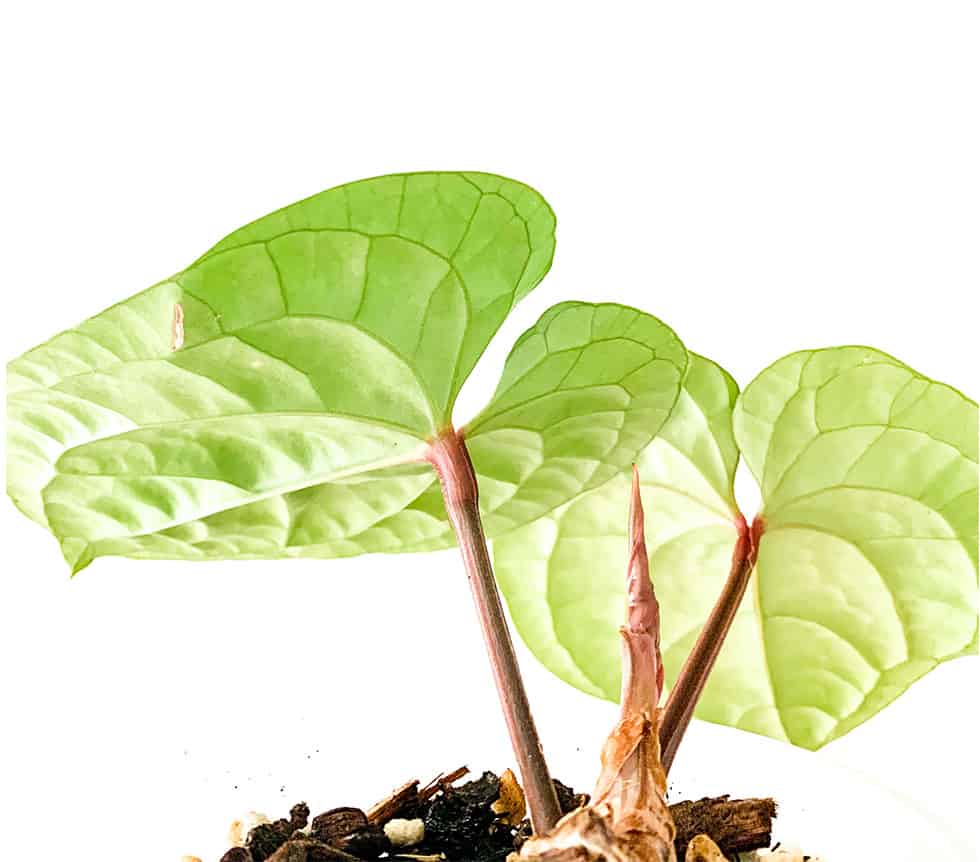
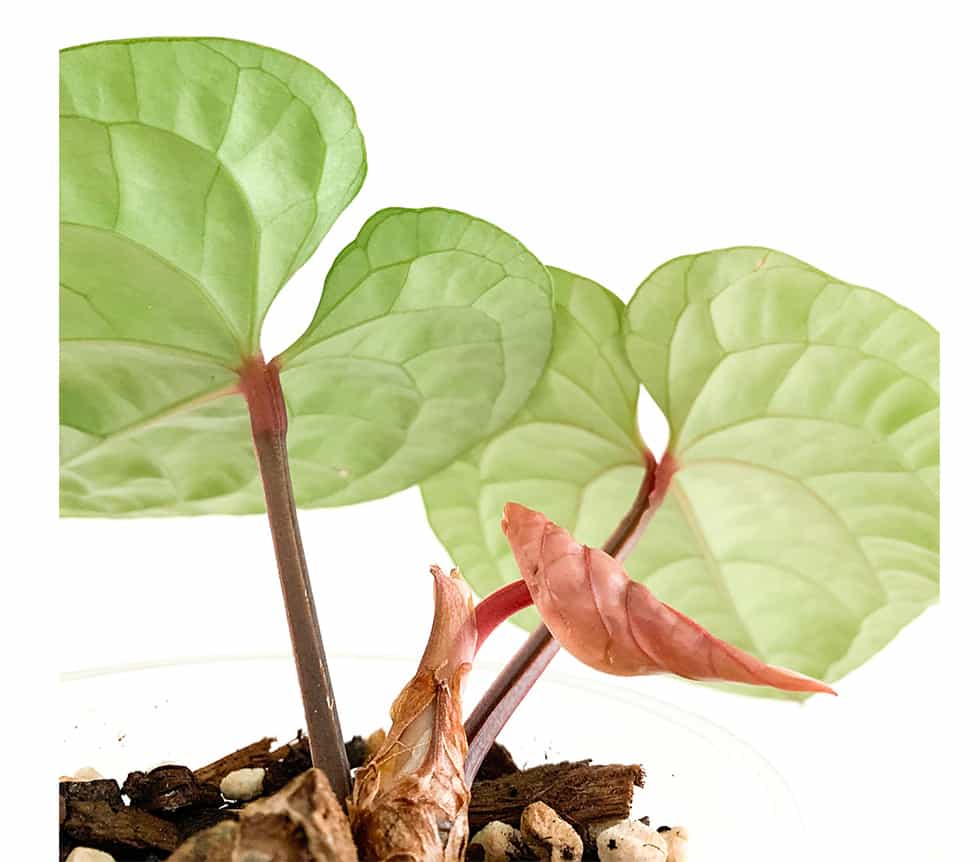
The first leaf of my Anthurium radicans x luxurians appeared perfectly, but the second came out very distorted.
I’m experimenting with lower light levels to see if the next one grows normally!
Anthurium radicans x luxurians won’t grow tall or very large. The spadix is pinkish maroon in color. This hybrid is sterile, which means it won’t produce viable seeds. You are left with propagation by stem division.
2. ANTHURIUM CUTUCUENSE
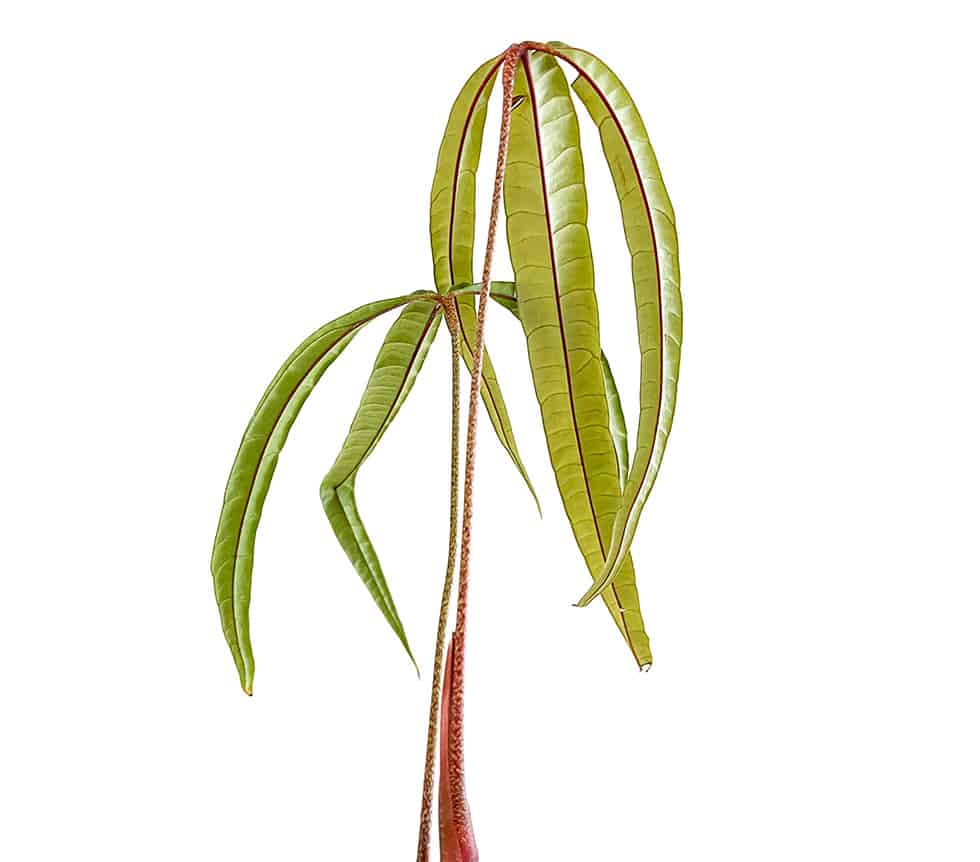
Anthurium cutucuense is one of the more rare anthurium species and probably the most challenging to grow in my collection. I adore this tropical beauty striking ribbed dark green leaves. It has unique red pigments on the petioles and leaves. The three-segmented deep green leaves are bullate and have unusual venation.
This native to Ecuador Anthurium species is difficult to grow and requires special care. It will test your patience for sure. I have not been successful in growing it.
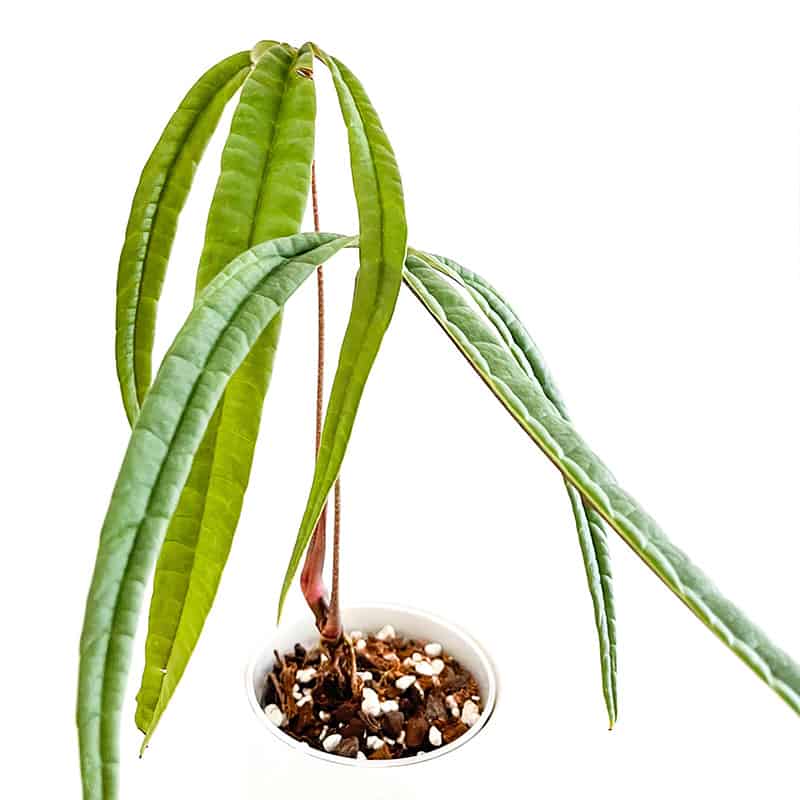
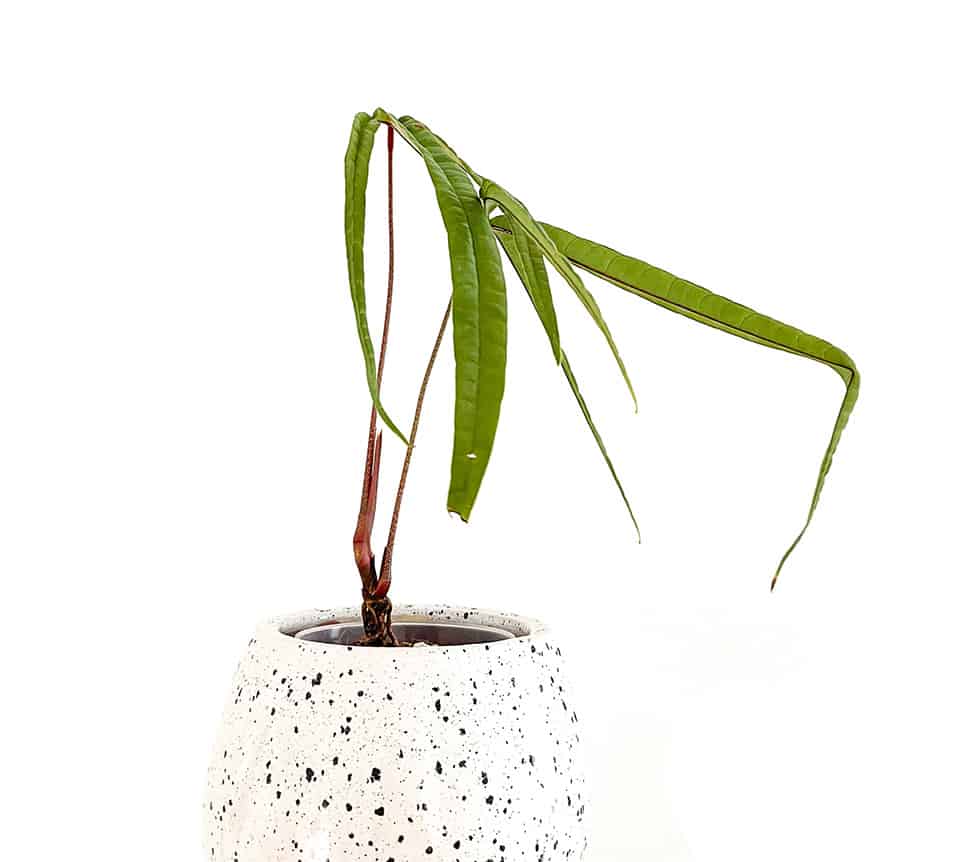
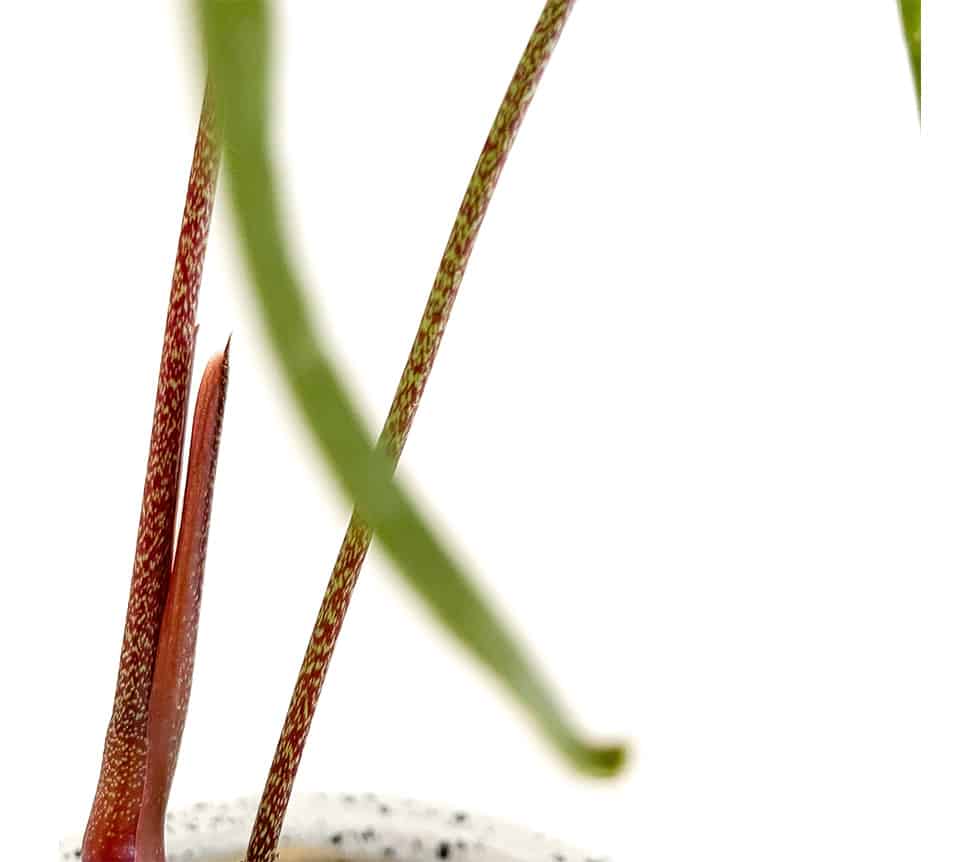
Anthurium cutucuense requires a drop in night temperature, very high humidity, and good airflow. It is a hemiepiphyte, so it would appreciate some support to climb onto.
Anthurium cutucuense got on my wishlist after seeing it in the “Cloud Forest,” a covered botanic dome in Singapore, where it was thriving in ‘wilderness’ growing to mature size.
3. ANTHURIUM PEDATUM

One of the more exciting anthurium species in my collection, Anthurium pedatum, is a showstopper with its palmate type of foliage.
Anthurium pedatum is one of the terrestrial plants native to wet forests at middle elevations in Colombia.
The petioles on the Anthurium pedatum are long (30-75cm), and the leaves are bright green and glossy. My leaves have 7-10 divisions. The margins of the leaves are undulate or shallowly wavy.
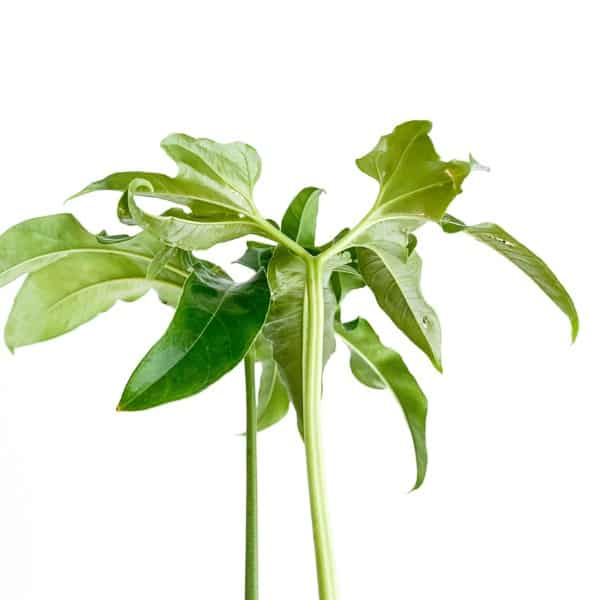
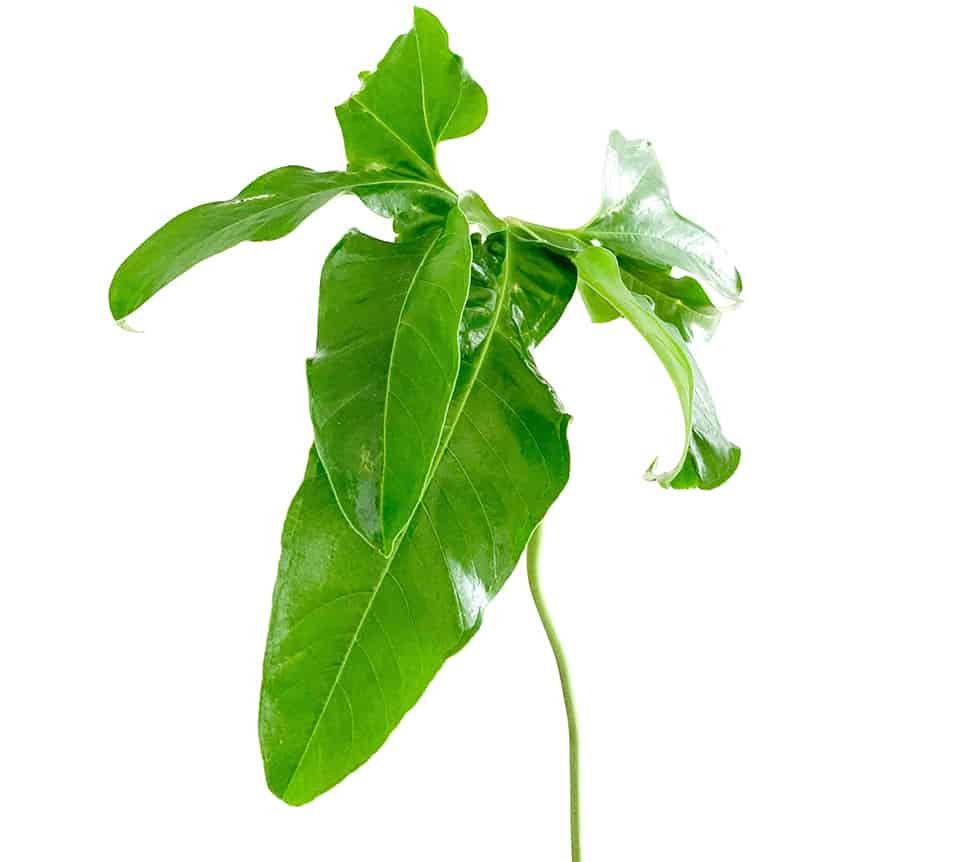
It was previously known as Anthurium elegans or Anthurium fortunatum.
It is sometimes confused with Anthurium pedatoradiatum, but these are two different species. The latter makes a great cross with Anthurium clarinervium and forms Anthurium macrolobium.
Read more about Anthurium pedatum care.
4. ANTHURIUM ARROW
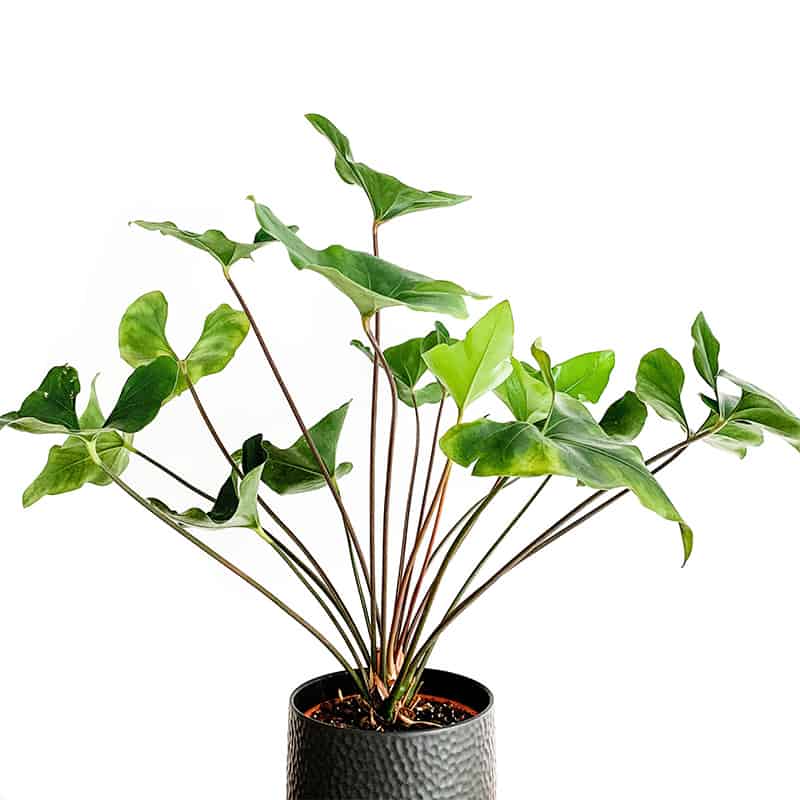
My journey into aroids inadvertently started with an Anthurium arrow. Only then, I did not know much about anthuriums. This Anthurium arrow stunned me with its dark green leaves, sculptural foliage, long elongated petioles, and arrow-like leaves. I’ve been a fan of Anthuriums ever since.
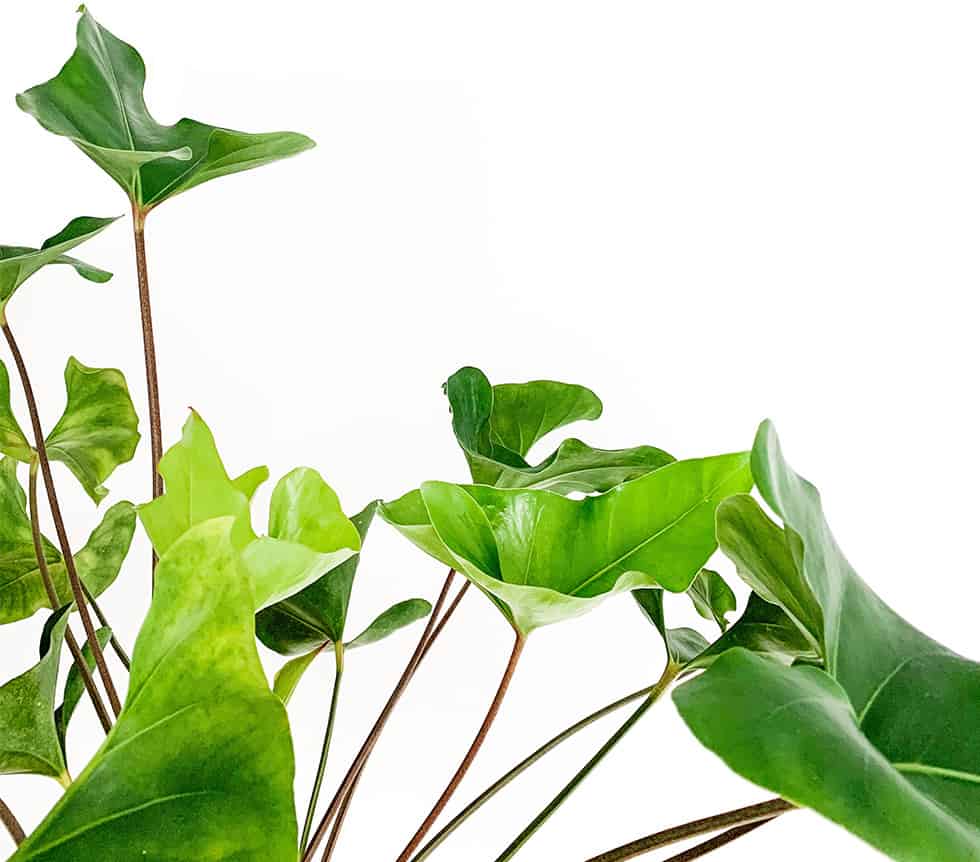
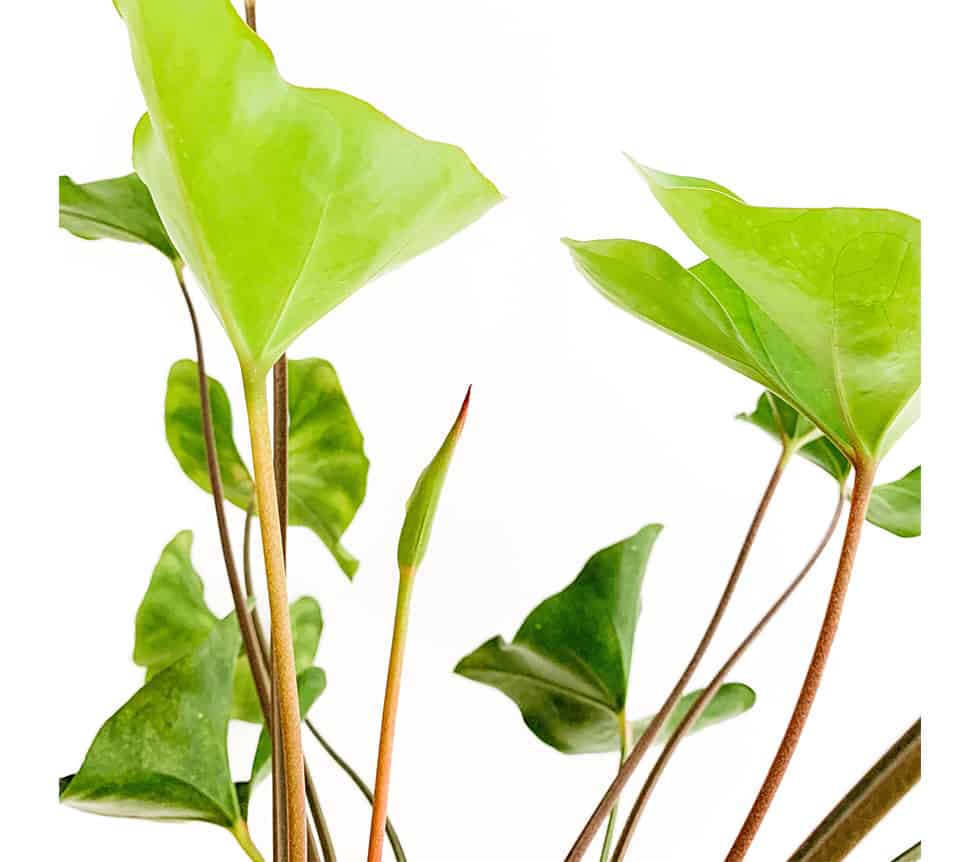
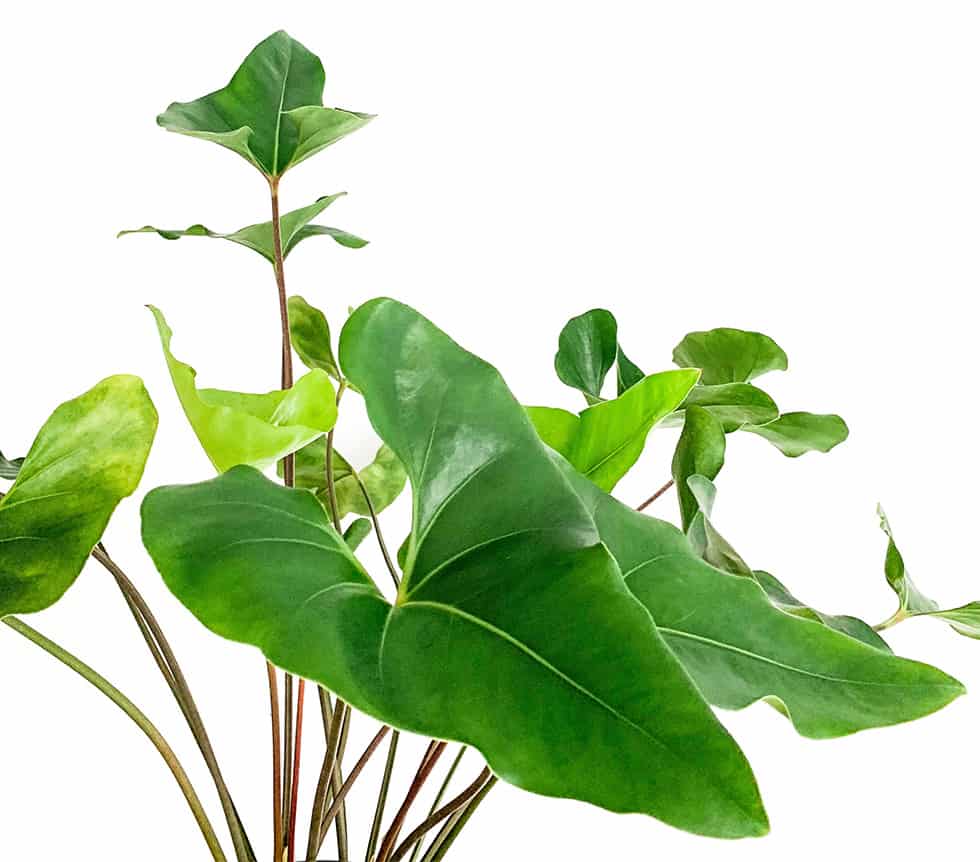
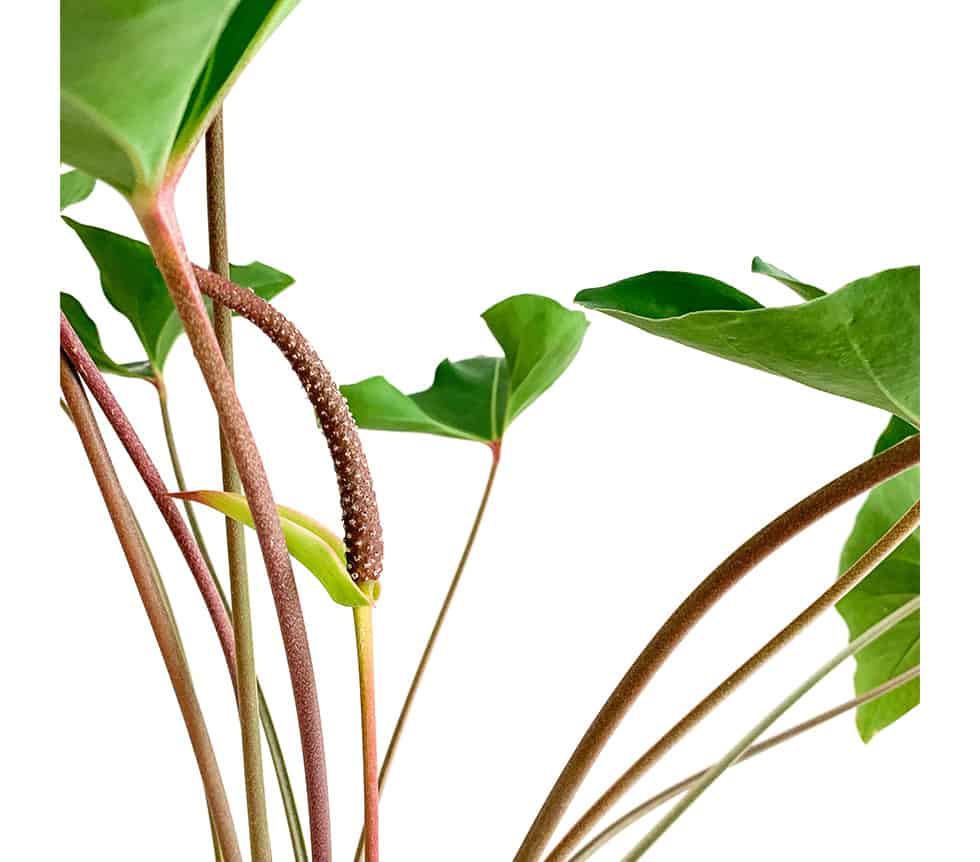
Anthurium arrow is inexpensive, and while not very common, they do show up now and then at the local nurseries. It grows impressive white fleshy roots very similar to orchids, so be prepared for a larger pot and more prominent space for this beauty to unfold.
5. ANTHURIUM LINEOLATUM
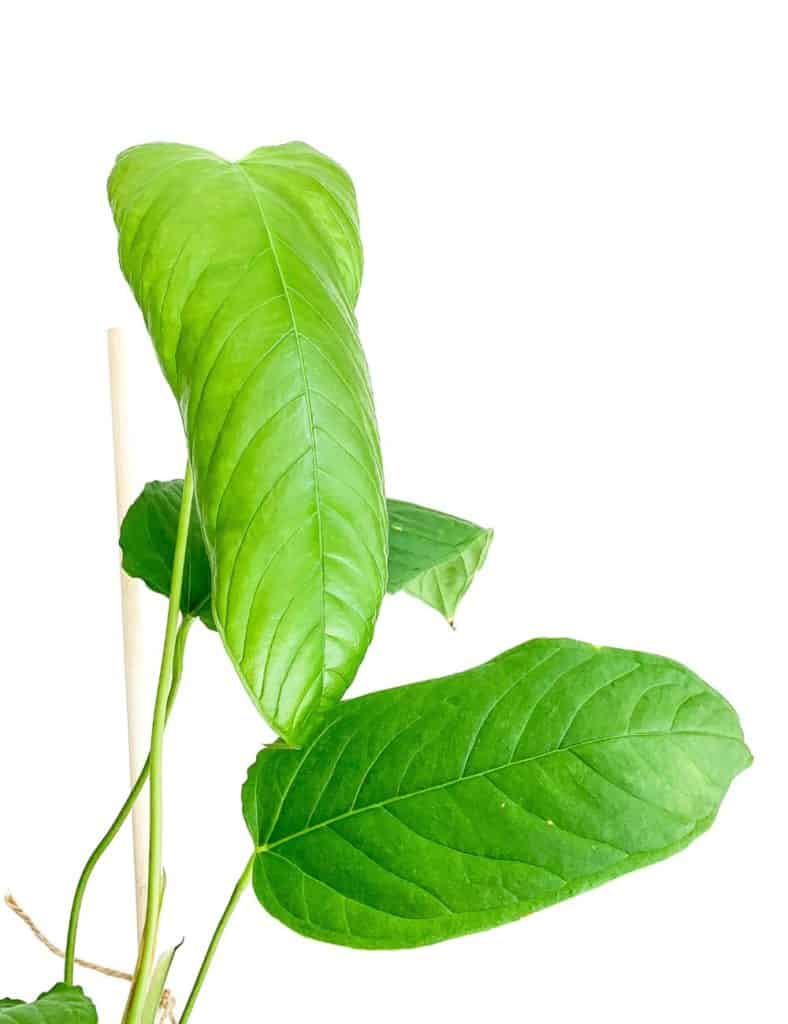
Anthurium lineolatum is one of my more satisfying anthuriums. It is easy to acclimate and grows steadily. I loved the bright green leaves so much that I had to get another one.
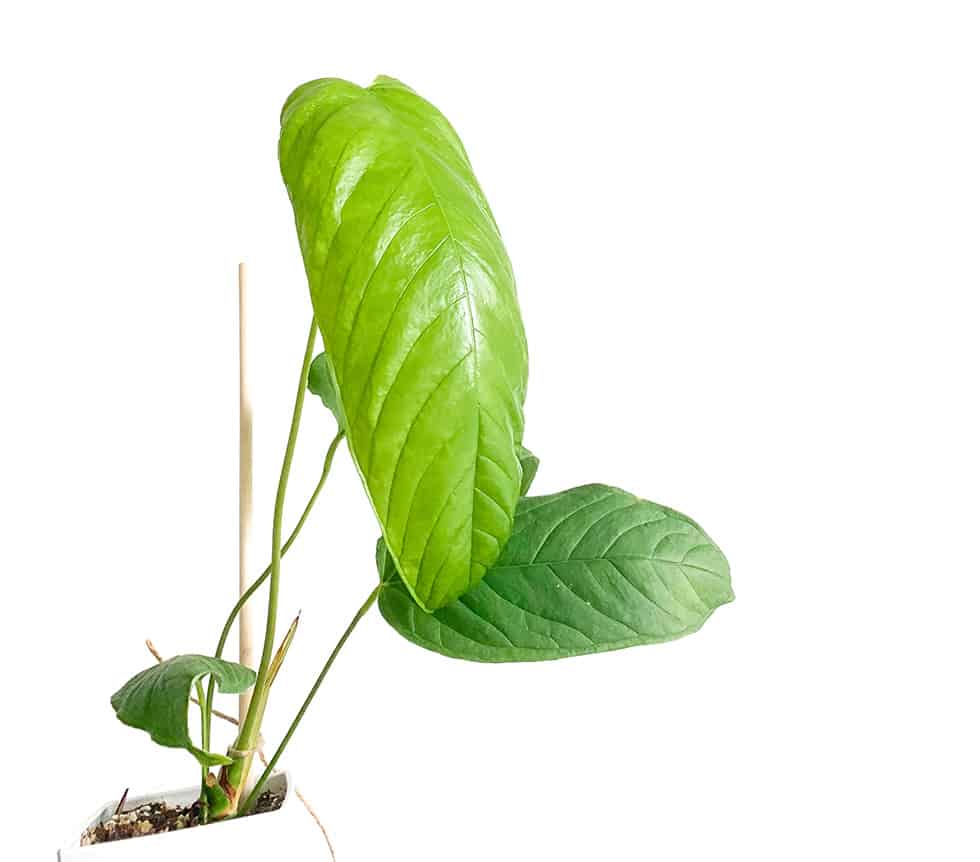
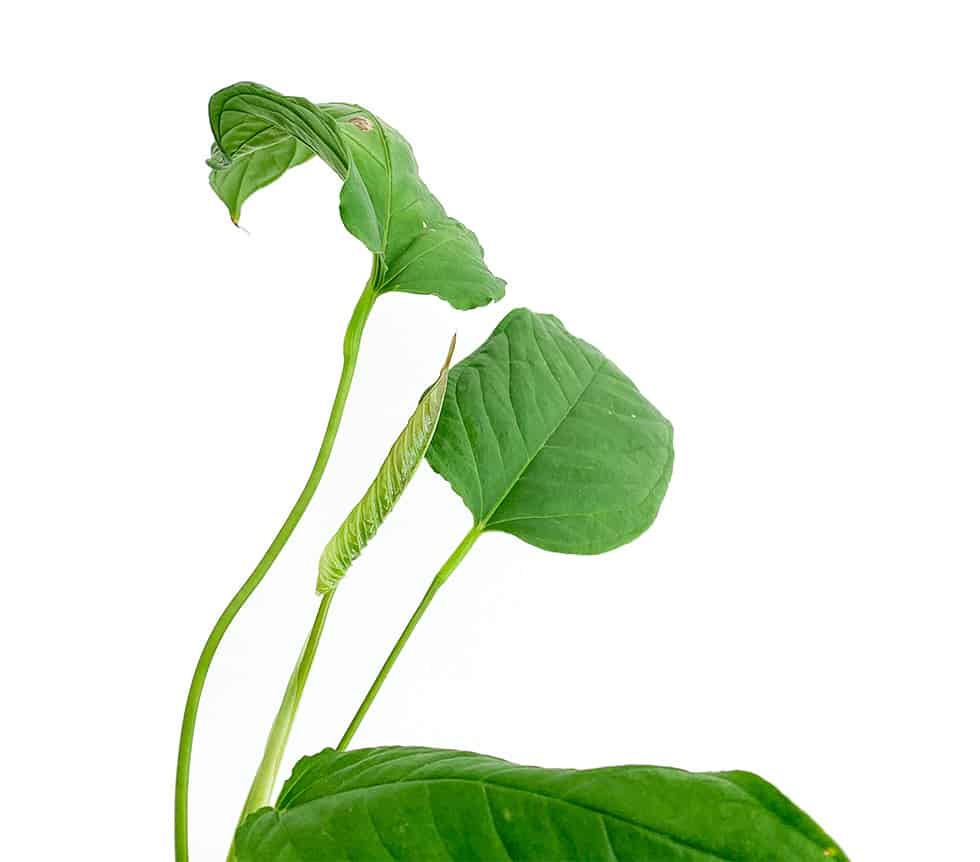
Anthurium lineolatum has light green leaves that are paper-thin and almost translucent when first unfurling. It is a magnificent show to watch the leaf expansion over several days.
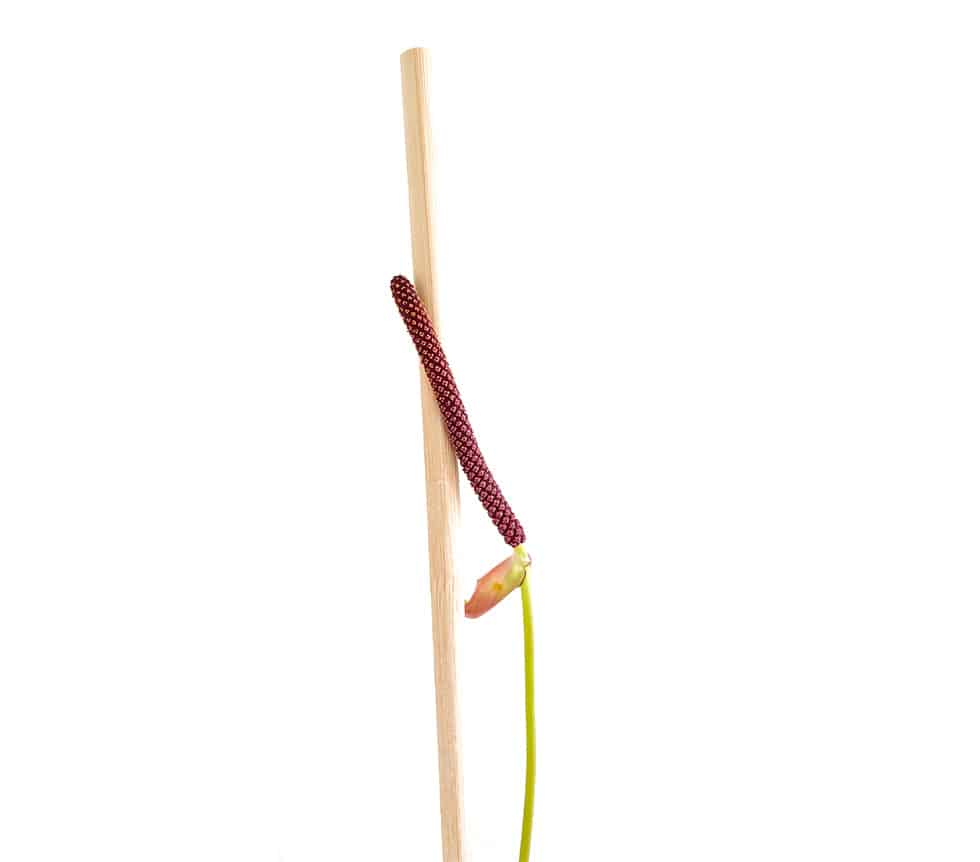
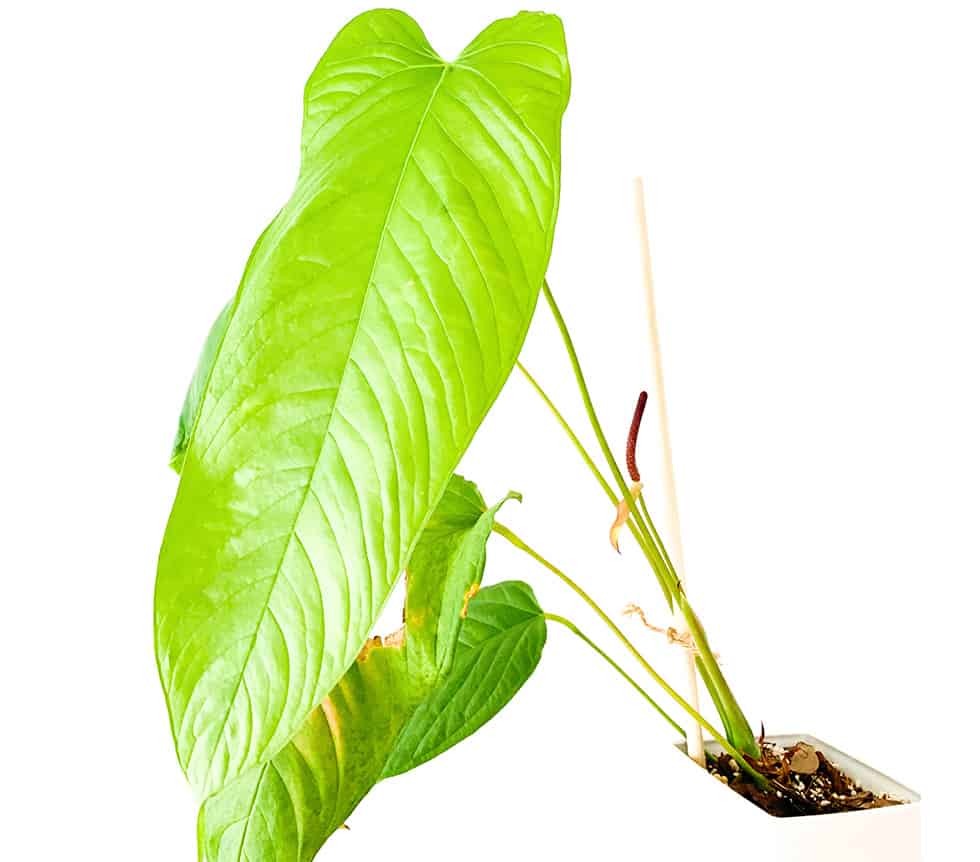
The inflorescence is bright purple. I was so excited when my Anthurium lineolatum species started to produce inflorescences, but unfortunately, I wasn’t able to get the pollination process going.
6. ANTHURIUM BALAOANUM
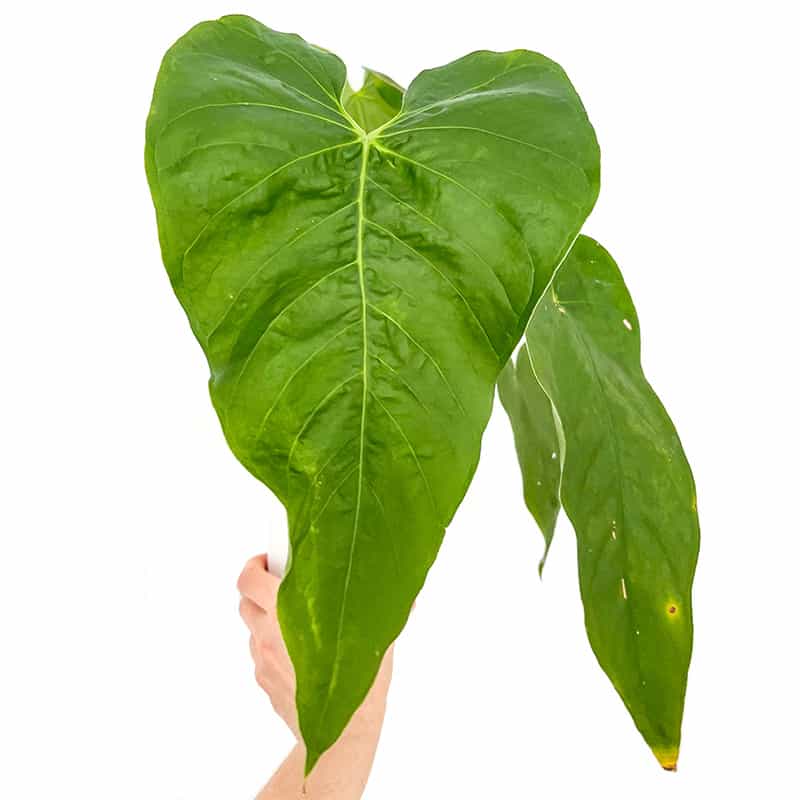
Anthurium balaoanum, previously known as Anthurium guildingii, is an aroid native to Ecuador.
The leaves of Anthurium balaoanum can reach enormous size. While I haven’t seen one in the wild, in the Cloud Forest Dome in Singapore, the leaves reach a couple of meters in diameter.
I have a juvenile Anthurium balaoanum in my collection, and the light green leaves feel like leather in texture (coriaceous) but are paper thin. They also have a sheen to them.
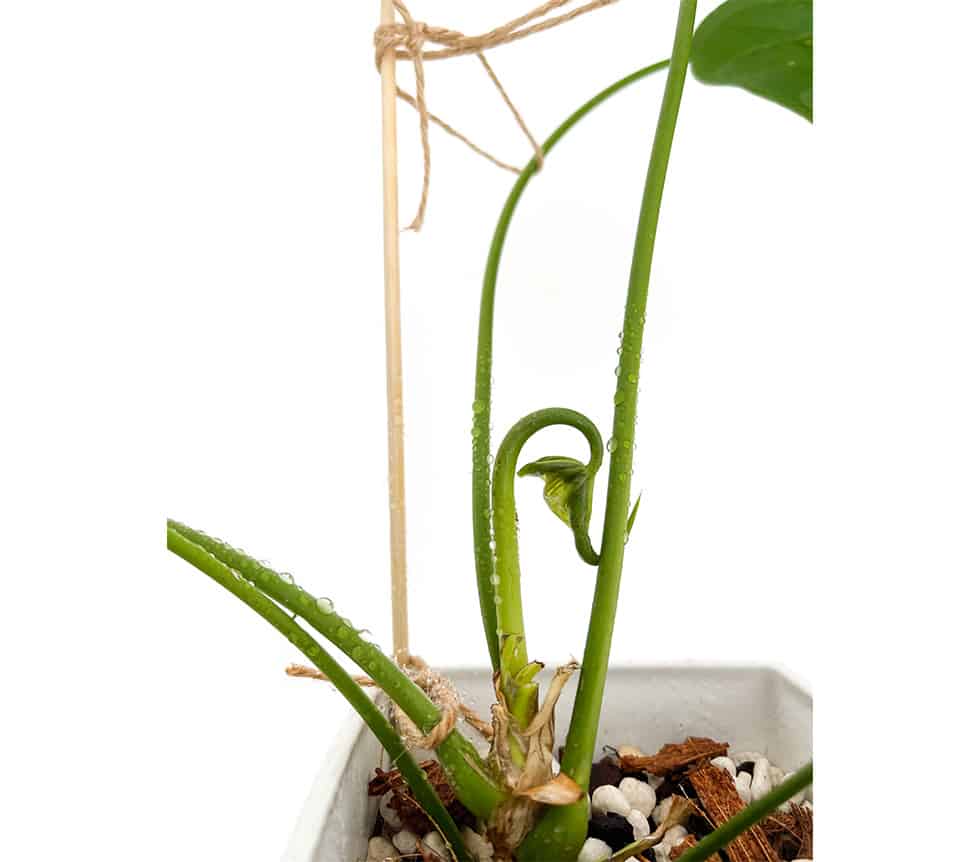
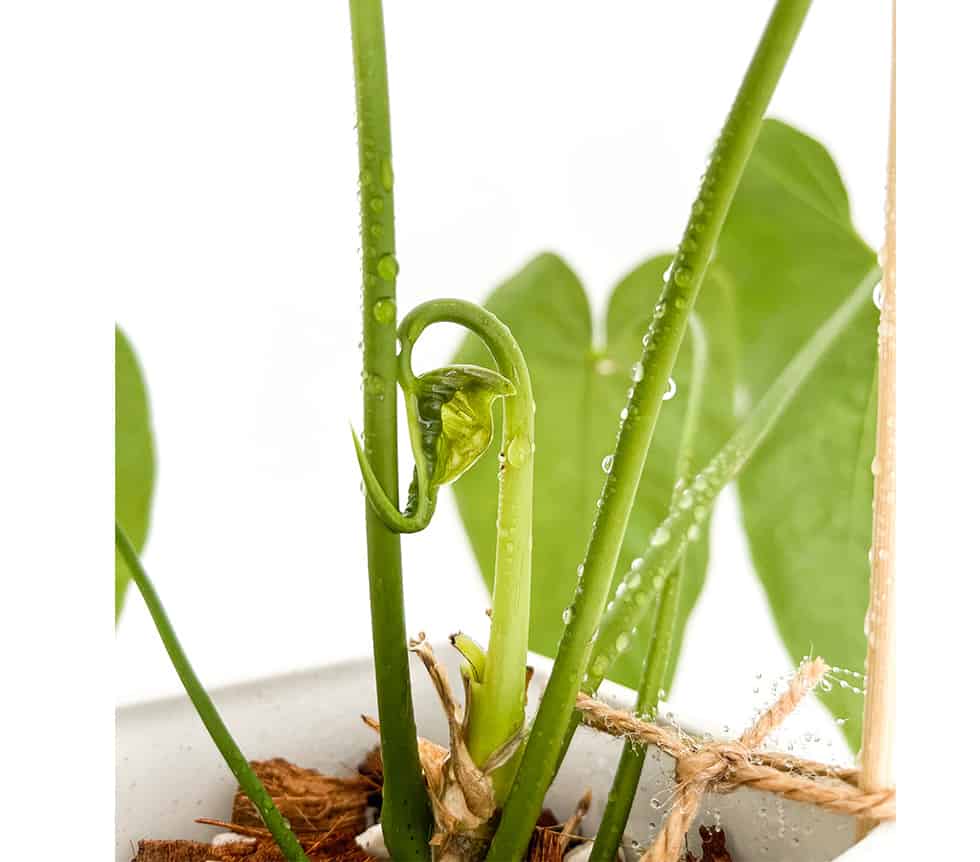
As the plant matures, the size of the leaves increases drastically, and the posterior lobes spread further apart, creating those characteristic ears. The edges of the leaves are slightly wavy, and it gets more pronounced with increased leaf size.
The leaves are also somewhat bumpy.
It grows as a chamaephyte, which starts on the terrestrial floor and then climbs up a tree.
Learn more about Anthurium balaoanum and its care in my new blog: Discover the Unique Beauty of Anthurium Balaoanum: The Aroid with Ruffled Leaves!
The danger of buying rare anthurium species
Unlike Anthurium andreanum or even Anthurium forgetii, Anthurium vittarifolium or Anthurium magnificum, which are very common, some of the rare species described in this post are endangered in the wild.
I bought mine from established nurseries selling plants via propagation and tissue culture or from local hobbyists who had multiple specimens or were sharing cuttings.
Be responsible and research where the plants you buy come from.
There is a vast black market for poached plants from the wild, and the pandemic-fueled interest in houseplants has exponentially increased illegal poaching, including many rare anthurium species.
Very often, verifying information is challenging. After all, anyone can claim to be a reputable seller on Instagram, Etsy, and eBay. Ask many questions and buy locally whenever possible.
If you’re looking for something a little more exciting to add to your houseplant collection, then consider one of the many underrated anthurium species I’ve listed.
I hope I inspired you to look into the anthurium genus and find the right plant for you.
Be sure to follow me on Instagram @plantgirlboss so you can stay up-to-date on all the latest anthurium finds.
